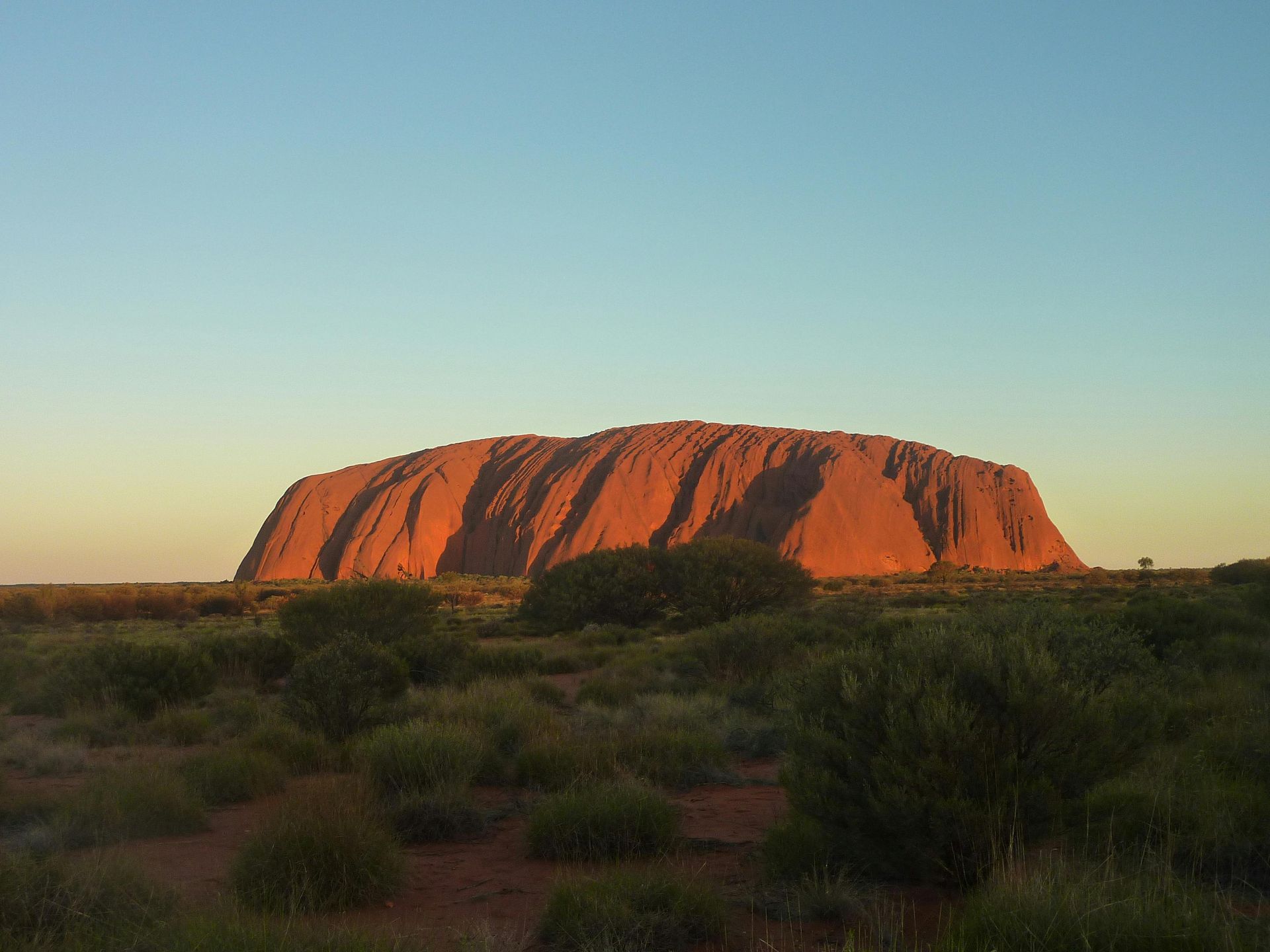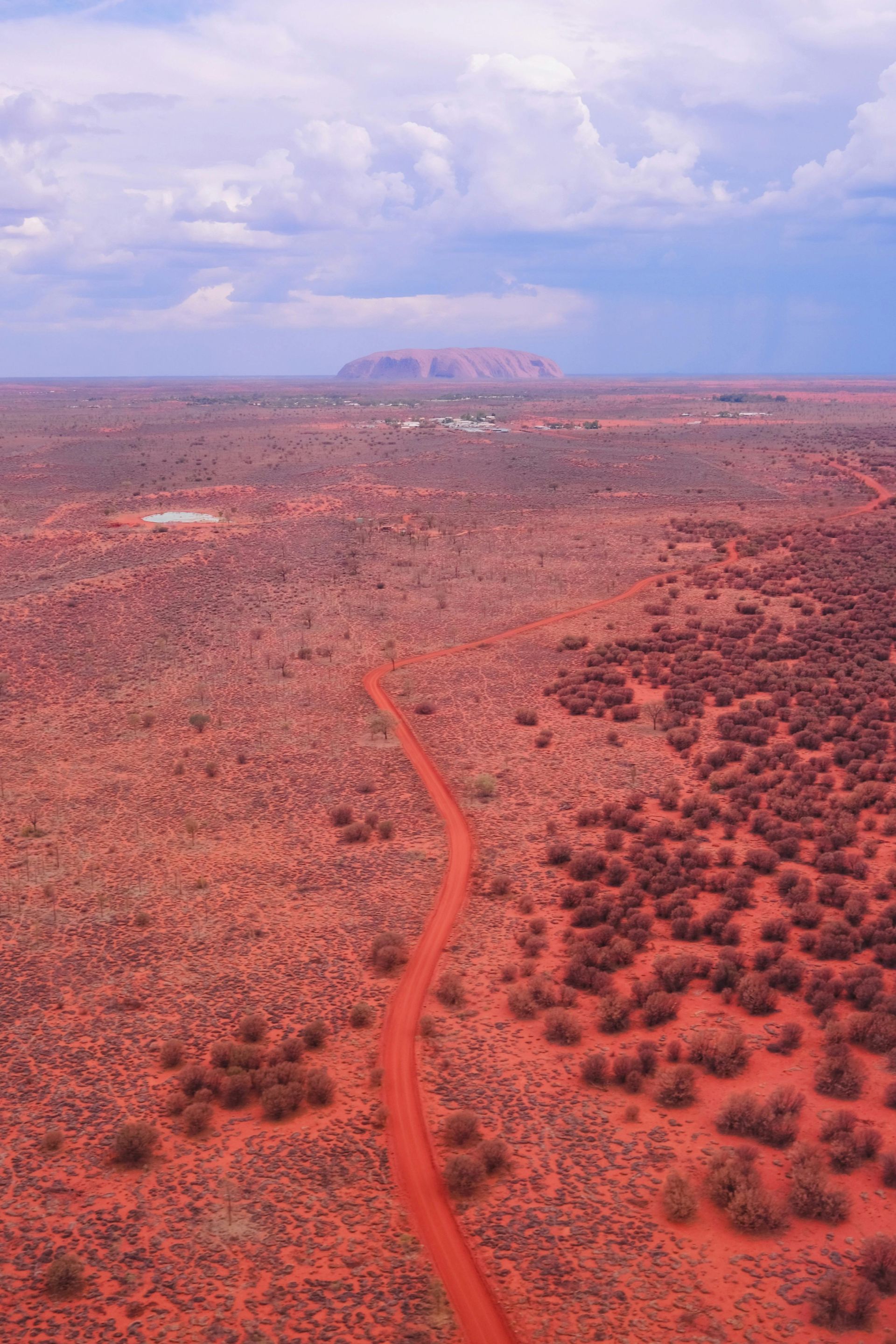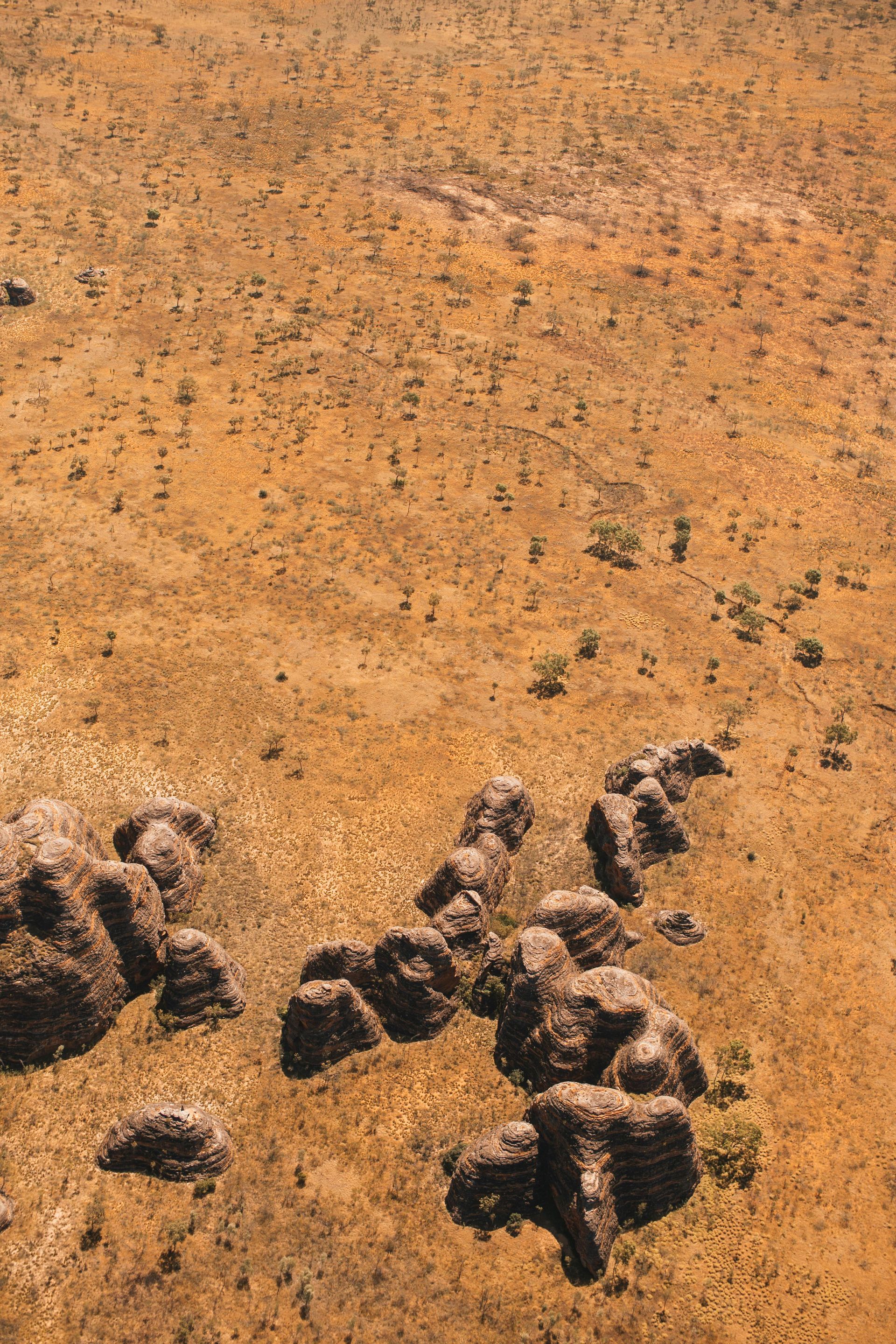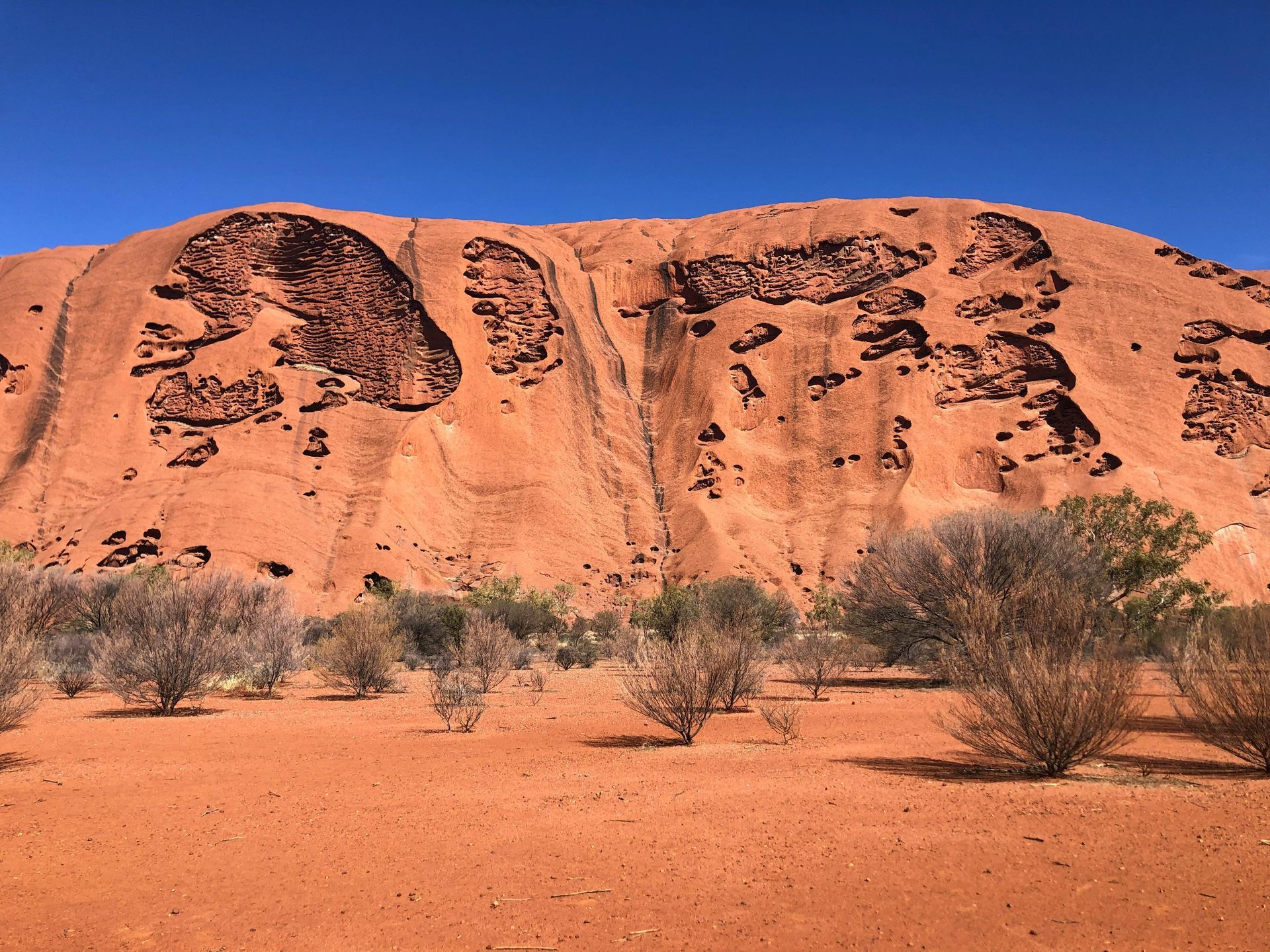Uluru (Ayers Rock)
Experience the Spiritual Heart of Australia's Red Centre
Hotels near Uluru (Ayers Rock)
Welcome to Uluru (Ayers Rock)
Imagine watching a colossal sandstone monolith dramatically change colours from ochre to deep red to fiery orange as the sun rises or sets over the vast, flat desert landscape. Feel the ancient power and deep spiritual significance of Uluru, a place held sacred by the local Anangu Aboriginal people for tens of thousands of years. Located in the Uluru-Kata Tjuta National Park in Australia's Northern Territory, Uluru isn't just a rock; it's a living cultural landscape, rich in stories, art, and profound connection to the land (Puli).
For first-time UK visitors, a trip to Uluru is often a pilgrimage to witness its iconic sunrise and sunset transformations, walk around its base, and learn about its importance. For returners, it might mean exploring the equally impressive nearby domes of Kata Tjuta (The Olgas) in more depth, taking Indigenous-guided tours to gain deeper cultural understanding, experiencing unique dining or stargazing opportunities under the immense desert sky, or perhaps appreciating the landscape from a different perspective, like a scenic flight. It’s a place that leaves a lasting impression.
Getting There: Reaching the Red Centre
Accessing this remote Outback location requires planning:
Flights: The easiest and most direct way is to fly into Ayers Rock Airport (AYQ) (also known as Connellan Airport), located just a few kilometres from Ayers Rock Resort (the main accommodation hub). Qantas and Jetstar operate flights to AYQ from major Australian cities like Sydney, Melbourne, Cairns, Brisbane, and Alice Springs. Booking flights well in advance is crucial as services are limited and fill up quickly.
- Alice Springs Airport (ASP): Another option is flying into Alice Springs (served from major cities) and then driving to Uluru. This is a long drive (approx. 450km / 5 hours) through the Outback but allows for exploration of the wider Red Centre region if you have more time.
Driving: It's possible to drive from other parts of Australia, but involves extremely long distances on remote roads – requires thorough preparation (vehicle checks, fuel, water, emergency supplies).
Getting Around Uluru-Kata Tjuta National Park
Once you're at Ayers Rock Resort (where almost all accommodation is located), you need transport to get to Uluru and Kata Tjuta within the National Park:
- Rental Cars: Picking up a rental car at Ayers Rock Airport (AYQ) offers the most flexibility for exploring Uluru and Kata Tjuta at your own pace
- Organised Tours: A very popular and convenient option.
Weather & Climate
Autumn (April-May) and Spring (late August-October) generally offer the most comfortable temperatures for exploring and hiking during the day. Winter offers pleasant daytime walking but requires packing for very cold nights/mornings.
Red Centre Wonders: 4 Must-Do Experiences

Witness Uluru's Colours at Sunrise & Sunset
This is the quintessential Uluru experience and truly magical. Head to the designated viewing areas (Talinguru Nyakunytjaku for sunrise, the Sunset Viewing Area for sunset) and watch as the massive rock face transforms through an incredible spectrum of colours – from deep purples and blues to fiery oranges and reds – as the light changes. It's breathtaking and different each time. (Tours go here, or drive yourself).

Walk Around the Base of Uluru
Connect with the scale and spirit of Uluru by walking the 10.6km (approx. 3.5 hours) Base Walk circuit. This flat trail allows you to appreciate the rock's diverse textures, discover hidden waterholes (like Mutitjulu Waterhole), see ancient rock art sites, and learn about Anangu stories associated with different features. You can walk the entire loop or explore shorter sections like the Mala Walk (guided ranger walk often available) or Kuniya Walk. Remember: Climbing Uluru is permanently closed out of respect for Anangu culture – walk around, not up! Respect signs asking not to photograph sensitive sites.

Explore Kata Tjuta (The Olgas)
Don't miss the other major rock formation within the park, Kata Tjuta (meaning 'many heads'), located about 50km (30 miles) west of Uluru. This collection of 36 large, ancient conglomerate rock domes is equally sacred to Anangu. Take the relatively easy walk into Walpa Gorge (approx. 1 hour return) between two giant domes, or for more of a challenge (and incredible views within the domes), undertake the Valley of the Winds circuit walk (approx. 3 hours, steep sections, can close due to heat – check alerts, go early).

Engage with Anangu Culture & Desert Experiences
Visit the Uluru-Kata Tjuta Cultural Centre near the base of Uluru. It provides fascinating insights into Anangu culture, law (Tjukurpa), connection to the land, traditional practices, and art (Dot painting workshops often available). Joining an Anangu-guided tour offers invaluable perspectives on rock art and creation stories. Consider unique evening experiences like the Sounds of Silence dinner (dining under the stars with Uluru/Kata Tjuta views) or Bruce Munro's spectacular Field of Light art installation (book well ahead!).
Tips for First-Time Visitors
This is critical! Accommodation at Ayers Rock Resort (the only place to stay near Uluru, offering various hotels/apartments/camping) and flights into Ayers Rock Airport (AYQ) are very limited and get booked out far in advance, especially during popular seasons (cooler months, school holidays). Popular tours (sunrise/sunset, Sounds of Silence, Field of Light, helicopter flights) also fill quickly. Plan and book your entire trip well ahead to avoid disappointment.
Book EVERYTHING Months Ahead!
The Red Centre environment demands respect. Drink water constantly – carry at least 1 litre per person per hour of walking, and more in hotter weather. Wear high-SPF sunscreen, a wide-brimmed hat, and sunglasses at all times outdoors. In hotter months (esp. summer), do walks only in the very early morning (finish by 10/11 am). In winter, pack warm layers including hat/gloves for cold nights/mornings. Annoying bush flies are often prolific (esp. Oct-Mar) – buy a fly net for your hat upon arrival; you won't regret it!
Prepare for Desert Extremes (Heat, Cold, Flies, Hydration)
Climbing Uluru has been permanently closed since 2019 at the request of the Anangu traditional owners, for whom it is a deeply sacred place. Please respect their wishes and cultural protocols. The experience of walking around the base and learning about its stories is far more meaningful. Also, look out for and respect signs indicating areas where photography or filming is not permitted due to cultural sensitivities. Listen to guidance at the Cultural Centre and from guides.
Respect Culture: Walk Around, Don't Climb
Entry into Uluru-Kata Tjuta National Park requires a Park Pass. Purchase this online before you arrive (recommended) or at the park entry station. Passes are usually valid for 3 consecutive days. Always stay on marked walking tracks, take all your rubbish with you, do not touch or remove rocks or plants. Drones are strictly prohibited within the National Park. Check the park website for current alerts, opening times, and any temporary closures (e.g., walks closing due to extreme heat).
Get Your Park Pass & Know the Rules
Uluru: Feel the Spirit of the Outback!
Uluru is far more than just a giant rock; it's the spiritual and geographical heart of Australia, a place of immense natural beauty, ancient geological history, and profound Indigenous culture. Witnessing its dramatic colour changes at sunrise and sunset, exploring its base, discovering the nearby domes of Kata Tjuta, and learning about the enduring connection of the Anangu people to this land is a deeply moving and unforgettable experience.
A visit requires planning due to its remote location and limited facilities, and respect for both the powerful desert environment and the living culture of its traditional owners. Prepare well, book ahead, embrace the unique atmosphere, and allow the magic and majesty of Uluru to leave its mark on you. Enjoy your journey to this truly special part of Australia!








